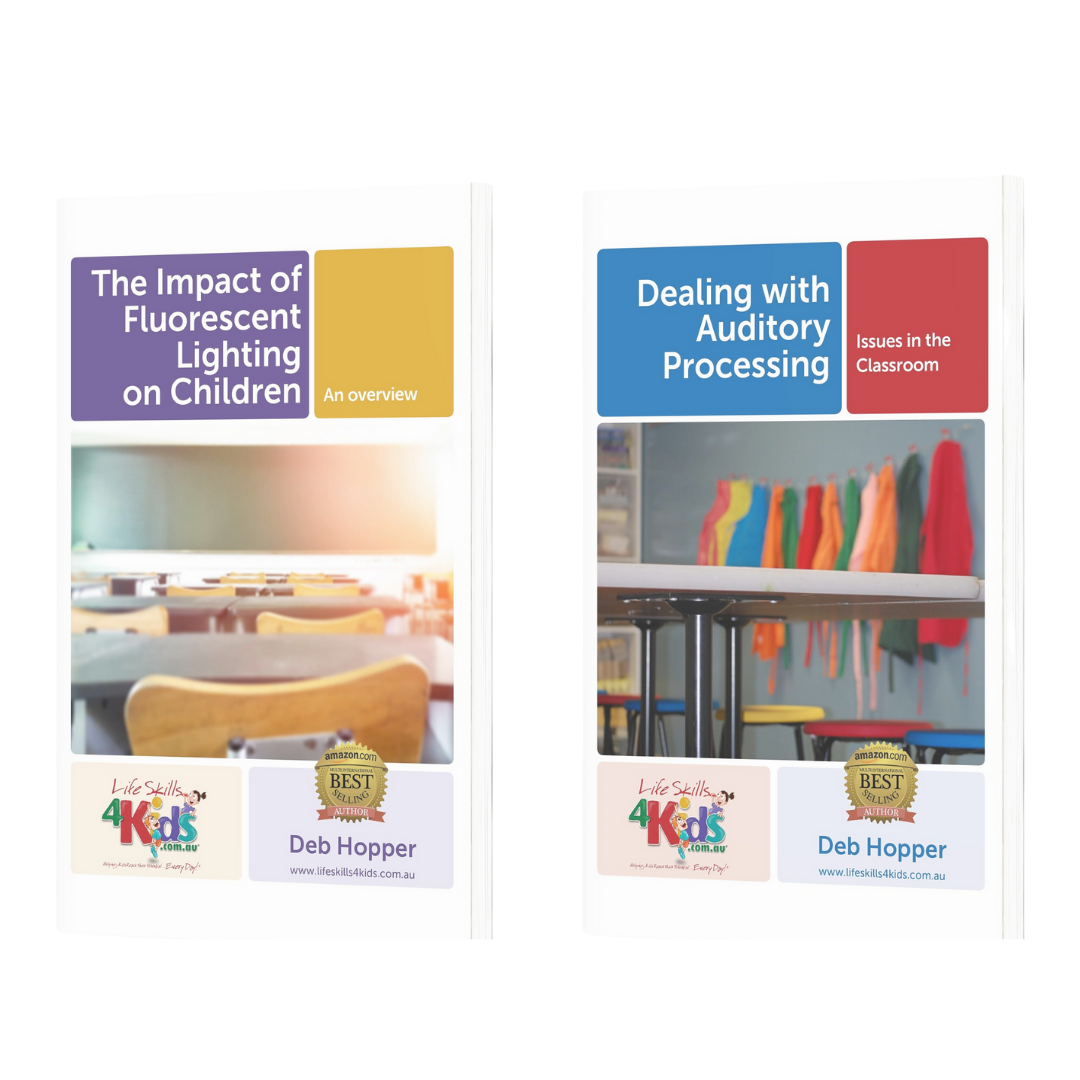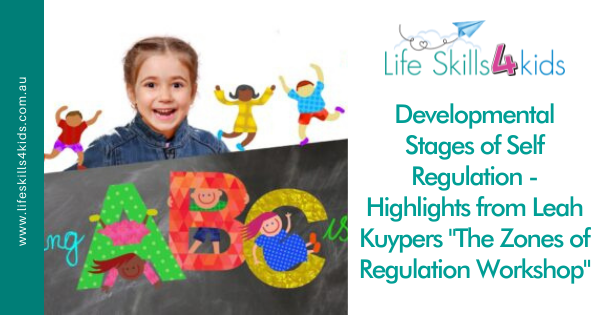Developmental Stages of Self Regulation and “The Zones of Regulation Workshop”
I’ve just come back from listening to Leah Kuypers, Occupational Therapist, who is the creator of the Zones of Regulation Program. She is an amazing OT (Occupational Therapist) and she has done so much to contribute to the world of self-regulation.
I want to give you my top three learnings that I gathered from her workshop. And, surprisingly, it wasn’t in the practical “how-to” strategies. And, that was amazing too! I really, really got lots of tips, and I will be transforming the clinic with lots of visuals over the next few months, to really do the Zones of Regulation Program really well with the visuals.
But, I just wanted to talk to you firstly about what her definition of self-regulation was, which I also really loved. She suggests that self-regulation is the ability to adjust the level of alertness, which makes sense, whether we are going fast, whether our bodies are going slow, or whether we’re going just right.
But then also, I love this second bit, so good. Self-regulation is looking after our level of alertness. But also, how we direct our emotions is revealed behaviorally in socially adaptive ways in order to achieve our goals. It’s not just our alertness and behaviour or alertness and emotions, it’s how our behaviour is shown through the emotions. And, the goal is for ourselves and for our kids, that we can do this in a socially adaptive way.
So, you know, if I have an unexpected phone call when my son is hurt, can I adapt in a socially appropriate way at work rather than just losing it. Or, if a child gets to school after a really tough morning, then can they adapt behaviorally to be able to self-regulate, both their level of alertness and also their emotions.
Now, I just wanted to share next the three … this was just a great way of looking at self-regulation differently. And, I have looked at self-regulation a lot myself in my clinical practice and in my own personal research. But, I just loved how she reflected on the developmental stages of self-regulation.
Self Regulation Stages
The first one is the initial behaviour strategies. Okay, by this we can think about younger children, especially babies in the first year of life. They need to have lots of co-regulation. They need to have you there. They need you to help them to settle, to soothe them, so that they can calm down if they’re feeling upset or whatever. So that, you know, when we have an upset baby, we will pick them up, we will use some sensory motor strategies. So, we will hug them, give them some nice deep touch pressure, we’ll do some vestibular up and down, and we’ll rock them back and forth. So, the behaviour is a way that the child or the baby can tell adults that they have needs that they need to have met.
The second area was language strategies. So, by language, it’s when kids can start to tell us, you know, “I’m feeling sad” or “I’m feeling hurt”. And, so many of the kids that we work with, and not just kids who have a diagnosis such as ASD and ADHD, but many of them do struggle with these, but also I saw that many typical kids, they really find it really hard to label and to say exactly how they’re feeling.
And then, the third area of self-regulation development is the metacognition, which is linked to executive functioning. So, number three, metacognitive strategies. Yes, so this is where, for an adult, so we can get that phone call that our child is hurt, and we can reframe in our head. We can use cognitive strategies. We can problem solve. We can call somebody for help. We can figure it out. So, this is where a child who might arrive upset at school might be able to walk into a classroom, might be able to say in their head, “Oh, I had a really rough morning, but that’s okay, that was this morning. I’m going to sit down. I’m going to listen. I’m going to attend.”
Or, if they’re finding it noisy in the playground, then they can think, rather than acting from a behavioural perspective, which is the first level here. If it’s too noisy, if it was a behavioural reaction, then they might just react, have a meltdown, because they just can’t handle it. If they have language strategies, level two, they might be able to say to the teacher, “It’s really noisy here. I’m not feeling well.” And then the teacher can help with a strategy, a problem-solving strategy, of helping them to move to a quieter place, for example.
But, if a child who has level three skills, the metacognitive strategies and for example, finds it too loud, then they can go through all three of the levels and they can problem-solve in their own mind. They can say, “Oh, I notice that it’s too noisy. Hmm, what can I do? I can tell the teacher and I can ask if I can go to a quiet area of the playground”, for example.
So, where I was really challenged with Leah’s workshop, was how many of our kids are stuck in this behavioural strategy stage? So this is when they’re in the fight/flight/fright response. How many of our eight, 10, 12, 17-year olds that we work with, how many of them are in the behaviour strategies where they’re just reaching out and they need us to help them to add language to what they’re feeling and to add strategy to how they can problem-solve and what they need to do.
That really spoke loudly to me and I found that so interesting!
Written by Deb Hopper, Occupational Therapist
Life Skills 4 Kids Classroom Reports
1. The Impact of Fluorescent Lighting on Children, and
2. Dealing with Auditory Processing Issues in the Classroom
There are all sorts of reasons children struggle to focus and pay attention in class. Discover why, and learn how to simplify classroom life for those who are struggling with these challenges in these two special reports.


